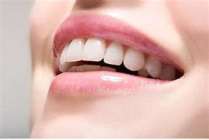Continuing Education in the dental industry is required for professionals in almost every state within the U.S., according to the guidelines set forth by the American Dental Association (ADA). Despite being mandatory in order to retain a license, it is interesting to note that there is quite a discrepancy in the number of credits required by each state among the major dental professions—including: Dentists (or General Practitioners), Dental Hygienists, and Dental Assistants.
For instance, Kansas currently mandates the highest number of credits (for Dentists in particular) within a specific time period, which is 60 credits in two years.[1] On the other hand, states such as Connecticut or Indiana only require 25 and 20 credits (respectively), within a two-year time frame for General Practitioners, and less than 10 credits per year for Dental Hygienists. What’s more is that Assistants are not required to earn CE whatsoever in over 70% of U.S. states.
The chart below compares the number of credits required in each state from highest to lowest for Dentists/General Practitioners within the United States:
(click for larger view of image)
As you can see, there is a substantial difference in the amount of time that Dentists need to commit to CE according to the state that he or she practices in. Is this okay, should each state be able to dictate their own number of credits, or should the entire U.S. share some type of congruity in the continuation of educating oral health professionals? Would it affect the state of oral health among the public as a whole?
For more on this topic, visit the ADA website and their resources related to CE at: http://www.ada.org/98.aspx




 As many in the dental profession are aware, the oral-systemic link has been drawing more attention than ever lately with the abundance of research being conducted throughout the industry. One aspect of this dynamic that affects nearly every single one of us at some point or another (if not on a continual basis…), is the relationship between stress and oral health.
As many in the dental profession are aware, the oral-systemic link has been drawing more attention than ever lately with the abundance of research being conducted throughout the industry. One aspect of this dynamic that affects nearly every single one of us at some point or another (if not on a continual basis…), is the relationship between stress and oral health.




